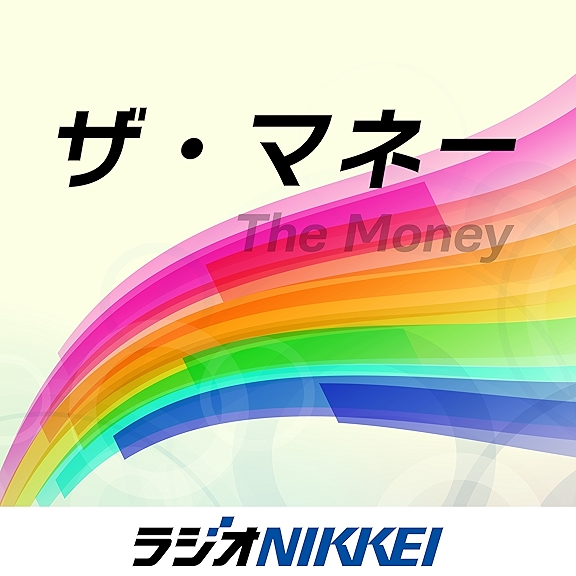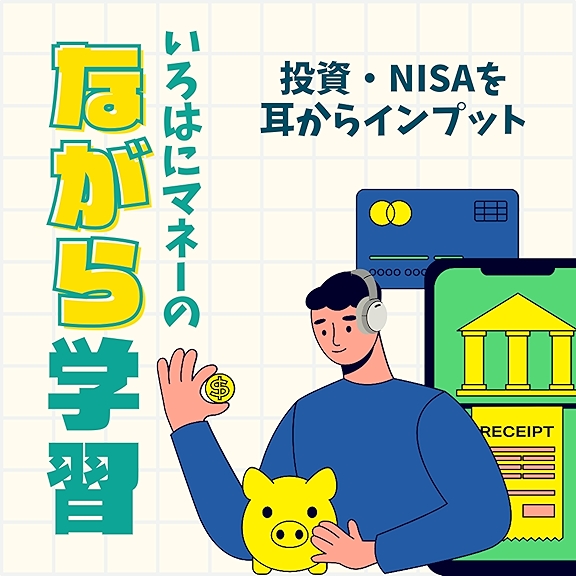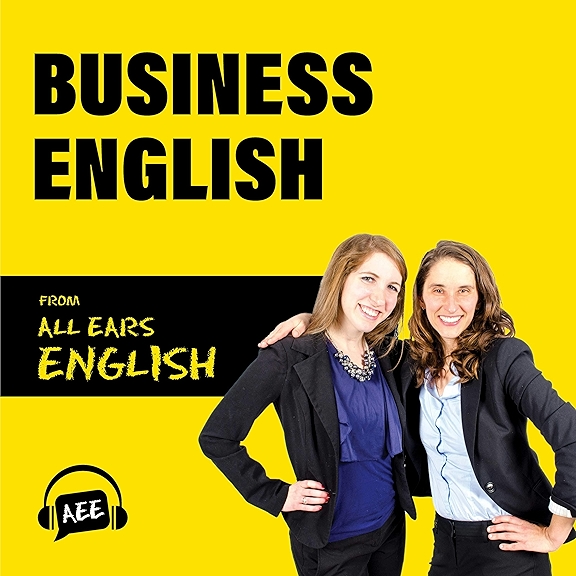
Episode Summary:
On today's SPACs Attack Chris & Money Mitch go into Vertical Aerospace.
Guests:
Vertical Aerospace CEO, Stephen Fitzpatrick EVTL
Vertical Aerospace CEO, Stephen Fitzpatrick going public via SPAC merger Broadstone Acquisition (BSN).
SPACs September Calendar:
- 9/28 DMYI merger vote with IonQ
- 9/28 MAAC merger vote with Roivant Sciences
Hosts:
Twitter: https://twitter.com/STORYInvestors
Twitter: https://twitter.com/chriskatje
For FASTER NEWS and IN-DEPTH market data, check out Benzinga Pro. For a free two-week trial go to http://pro.benzinga.com/register
- Get 20% off Benzinga PRO https://benzinga.grsm.io/youtube20
- Become a BENZINGA AFFILIATE and earn 30% on new subscriptions
Disclaimer: All of the information, material, and/or content contained in this program is for informational purposes only. Investing in stocks, options, and futures is risky and not suitable for all investors. Please consult your own independent financial adviser before making any investment decisions.
Unedited Transcript
How are we doing traders? Welcome to the specs attack. Yes, we're going to be getting into aerospace. We talked about these companies we've talked to Joby, we've taken a look at these companies. So get ready. We're going to talk to another one, one that has impressed me. And I know Chris is going to be super excited to get into the interview.
Let's go ahead and jump right into the. We're going to get into headlines and hit that interview as fast as we can. Let's go ahead. You guys start us up with a thumbs up.
what's going, what's going on, traders. How are we doing out there? Let's go ahead and bring in the brains of this show. Chris catchy was going on. Hey, what's up Mitch? Yeah. Happy Friday to everyone out there. Starting to show up a little late, but. We got the headlines. We, we got an interview and we'll also try to hit ticker time at the end of the show.
So stay tuned to everyone. It's going to be a great episode here. Yeah, you guys, like it says at the bottom up next, we'll be getting into BSN, which is a company that's going to be merging into an aerospace plate. You guys, you know, one thing that we've talked about is how we've. Taking a step into these kinds of plays that have come to the market.
We're going to bring you another one today. But first thing, we got a couple of headlines. I know Chris wants to get right through that. Let's go ahead and knock those out.
All right guys. Yeah. Quiet Friday out there. No new deals. I'm not seeing any rumors. Um, but let's get to some headlines. We do have some analysts notes out there. So up first SMF, our SEMA for holding. Jeffrey's initiating coverage with a buy rating and a price target of $13. So a SEMA four S M F R. This is one that's under $10 right now.
Uh, got a nice little uptick this morning, but about 2% right now. And we have PEO near pay P a Y O city group initiating coverage with a buy rating and a price target of $12 and 50 cents. I'm one of those FinTech plays. This one is starting to creep back up to the $10 level. Uh, we'll see if PEO near can get back up there.
And then Protera Barclays initiating coverage on pro Terra PTR a with a price target of $10, a Proterra. Remember electric, uh, buses and vehicles, the $10 call here. Um, this is an equal weight rating. Not great. Considering the stock is trading right around 10 times. Um, this continues to be one of my favorites going forward.
As I think we get some new electric bus deals. And then speaking of electric buses, we also have lion electric, L E V Barclays initiating coverage with an overweight rating and a price target of $17. So there you have your pair trade Barclays, essentially coming out and picking Lyon electric as the one that it favors more.
Over pro Terra. So interesting. I like both of them. I think the sector's got room for many players. Um, but Barclays here taking the lion electric side, then fiscal. How fast, sorry, we've got to talk about this one. Uh, you know, I own shares of Fisker. I liked the story going forward, Mitch and I both highlighted this one this week and we said, what's the next event to watch for?
Right November the LA auto show. And here you have a tweet from Henrik Fisker. Last night saying, uh, the global debut electric Fisker ocean production intent vehicle at 2021 LA auto show, November 19th delivery. Start Q4 2020. Come check out the oceans, never before seen technological innovations, we will have several vehicles on display.
Look at that chart on Fisker, the volume kicking in there. Um, you know, Henrik, Fisker. He's no stranger to Twitter. Um, but, uh, again, LA auto show, November 19th. I think that is going to be a major event for them with all eyes on the ocean. And then we have help as eight lbs. Uh, they're a global leader in micro mobility shares have been running recently on that media arm, you know, selling the rights to soccer games, but they announced their official arrival in California.
Today. They're going to deploy those east suitors, uh, Santa Barbara county. They have a one-year permit. Initial fleet will roll out and expand throughout the county. Um, help us now, uh, obviously a leader overseas, but they are expanding into more and more cities here in the U S you see that chart?
Coincidentally help us has micro mobility news out today in shares are down. But again, High flyer over the past couple of trading sessions based on, you know, the other, uh, media arm news. So not surprised to see profit taking, but again, micro mobility is the big story here to watch. I think the media, you know, is not going to be as big of a revenue driver for them.
And then we do have redemption deadlines today. Uh, several tickers, M a S. D M Y I G L E O S T P C C a H C S P F R and P. T K I will know DM. Why I already starting to run up a, I Q quantum computing. Of course the T the company there and CHC is a biotech deal and a smaller float. So that would also be one to put on the watch list, um, for next week's merger votes.
Uh, that's what I've got for headlines match again, not, not a ton out there today for Friday, and also looking at the chart. It doesn't look like we are the watch list. It doesn't look like we're getting a ton of big moves out there. All right. So w we want to get right into our interview today. But one thing I wanted to mention before we get to that interview is how cool of a website they have.
You know, we get to see a lot of these websites. Um, and a lot of times I look at the websites and I'm like, oh, just a simple website, you know, but I really enjoyed how you, when you come to the web. You get the feeling of exactly what you're looking at. So definitely I think it's a pretty good website. So whoever designed this, give them a good thumbs up.
You guys give us a good thumbs up. We're going to get right into our interview. Chris, do what we do best where we unlock specs. So let's go ahead and nail this out. You guys give us a thumbs up. Got another great interview for you guys today. Right now coming up.
All right guys, another exclusive interview here on SPACs attack. Joining us on the show. We have Steven Fitzpatrick, the CEO and founder of vertical aerospace company going public Vyas with Broadstone acquisition, ticker B S N. And also I will note the company's new ticker will be Evie T L Stephen.
Welcome to the. Thank you so much for having me guys. Awesome. Well, let's dive right into questions. You know, where we expect expects attack. We talk all things, specs and beast backed companies. One of the first questions we like to start out with here is, you know, why the decision for vertical aerospace to go public via a spec and was a traditional IPO also considered by your.
Yeah. So it's a question that everybody asks, um, uh, but it's still, it really deserves a great answer. So one of the things that we really loved about what we saw in the SPAC opportunity was the ability not just to talk to our investors and to, to talk about all the prospects and the, the, the, the work that we're doing, that the really exciting future technology that we're bringing in.
So on. Um, when you think about the bagels that we're building, uh, these are really novel aircraft. They're going to transform how we think about traveling around cities and in-between cities and so on, but they're pretty new aircraft. So I think it's, we, we did a really great job in engaging with passengers all over the world.
Um, about getting, giving them confidence to riding these vehicles. So do you think, first of all, going public really helps with that credibility and I think we've seen there's big momentum in the ed toll space, uh, around going public and especially through respects. Um, but then also, um, you know, working with really established industry partners.
So, uh, world-class, world's leading airlines like American, like Virgin Atlantic, like golden in Brazil. And, and taking the company public was a great way to bring those guys into our ecosystem as well. So there was a lot of advantages. It, it happened, uh, you know, a lot faster than it normally would on a normal IPO process.
And so we were able to speak to investors, um, go through the spec process and then we hope get right back to really focusing on designing and building these amazing aircraft and not spend the next 12, 18 months, uh, going through an IPO. Perfect. So you mentioned, you know, the EVT O L space. Can you just give, you know, viewers out there who aren't familiar with either the EBTL market or vertical aerospace, a little bit more about your company and how you play into that?
Sure. So, uh, E V T O L stands for electric vertical takeoff and landing. Um, these are vehicles that, uh, I think we've probably used to call flying cars. Uh, now we're calling them all that air, taxis or totals. Um, these are vehicles that will take off and land vertically. The name would suggest electrical.
Um, we're flying about 200 miles an hour when we cruise, but we don't need a runway. So we take off from either a sky port or a heli pad. If you want to think about traditional infrastructure terms, you can take off from any heli pad, the beauty of these aircraft, because they're electrically powered.
They're really, really quiet. They're about a hundred times less noisy than a helicopter. When they're in crews. They're also about a hundred times safer. We're certifying. This aircraft to, uh, the, uh, Yasser, uh, UV tall standard. That's the same safety rating as it would be a Boeing or an Airbus, uh, that you would fly in trans Atlantic.
So these are about a hundred times safer than a helicopter. And because they are electrically powered, they prepare a few moving parts to compare it to traditional helicopter. So the operating costs, the maintenance and so on super, super low. We actually think when, when we bring these, uh, planes to market and just three years time, it's going to be about a fifth of the cost of flying in a helicopter.
So an 80% cost reduction, meaning that these vehicles are going to be available for an affordable for just what, anybody that lives in a city in north America or Europe. So it's really going to transform it. It's like, you know, helicopters are amazing, but the really, for wealthy people with a very high risk appetite.
And so these vehicles are going to be, you know, for everybody that live in cities, Perfect. So, you know, you mentioned, uh, a couple of names, um, at the top of some partners and companies you work with, uh, another item we always talk about, you know, on specs attack here is some of the investors, right? So, you know, immediately jumps off the page from the investor presentation and the PR that some big investors in vertical aerospace, Microsoft American airlines, Honeywell roles.
Um, can you talk a little bit, just, you know, to start with some of these, uh, investors in the company and what that may mean for, you know, validation to potential new retail investors out there? Yeah, Chris, I think that's a great question and something we really focused on when we were doing a race, um, and going through this back process, uh, we have been working hard for five years.
Um, it's been a relatively. Stealthy or behind the scenes existence. We haven't gone for a lot of PR. We haven't had a big retail following, um, some of our competitors, but we, we really, really focused on the quality of the engineering. We've hired hundreds of engineers from these enormous aerospace companies and really gone experience over youthful vigor and confidence, let's say so we've got 1700 years of experience on the engineering team that certified 30 different aircraft or jet propulsion systems between them.
And the focusing on the engineering has meant that when we go and speak to airlines, when we go and speak to our technology partners, you know, we're speaking their language and we're really working within a, a world-class aerospace engineering ecosystem. And so when it gets to the investment, when it, when it came to our go-to market strategy, I think we've been able to demonstrate just how sophisticated the design, the credibility of the team.
And so we've really gotten the backing of the experts in the sector. And I think it's really important for investors coming in. Uh, , it's new to everybody. You know, there, there's never been an opportunity to invest in an Evie talk company in a public market up until a few, few weeks ago, a few months ago.
Um, so we really think the validation that's coming from being backed by these industry leaders that, you know, they're, world-class experts in their, in their own technologies. It's a real validation of the team, the strategy and the, uh, and the. And then along with those big investments, you know, that we just talked about, you also have some strategic partners.
So, you know, you mentioned American airlines, Virgin, uh, goal, and some others. Can you talk a little bit about what these partnerships look like, uh, in terms of pre-orders commitments and how these companies will help push vertical aerospace going from. Yeah, sure. So one of the, um, the big opportunities we see in the early years, and as I said, we're, we're on track to certify these vehicles in 2024.
So. Uh, we think one of the very first opportunities is going to be working with airlines to help build, uh, extension routes, uh, from, from their airport hubs and, and giving, uh, a wonderful pre and post flight experience to their passengers. So we wanted to work with the world's leading airlines and most innovative airlines.
Um, before we, uh, nine star SPAC merger, we had a partnership that we announced with Virgin Atlantic and the UK. American airlines in the U S so some really big names. Um, but then also on really critically Avalon, um, which is the world's second largest aircraft finance and leasing company. And why that's important is that we are looking at the global opportunity, uh, for Evie tolls.
Um, some of the world's largest cities are in emerging markets where they stand to benefit the most from, uh, the, the, the, the, the, the ability to fly over. Don Don traffic. And so in those markets, the lease financing of aircraft is the airlines run their business. And so working with Avalon, they've got nearly a thousand aircraft, $30 billion of assets that they manage and having them stand beside us and validate our design, validate safety, validate the, the, the, the strategy, the company.
It means that we were able to walk into so many discussions of airlines all over the world. So whether it's goal in Brazil or, you know, we're working with non-metro Benny in Japan, these are going to be enormous markets for Avalon. I've got 150 different airline customers that they're pushing this through their distribution channels.
I want to talk a little bit about the timeline, um, you know, a commercial operation set for 2024. Can you walk us through, you know, what happens, you know, from now until 2024 to kind of get the company set up for, you know, that huge, uh, catalyst. Yeah. So we've like I said, we started in 2016, we built two full scale prototypes.
Um, I single Cedar, then we, we developed a pasture with two, uh, sorry, pilot, two passenger, uh, vehicle. And then we've now moved on to the, the X four, four passengers. Um, and a pilot, obviously. So that's the one that we're taking the certification and we're already in production now for the production prototype.
Um, there's a series of a lot of test flying hours. There's a lot of different programs that we've got to go through. Been working with the regulators in Europe for three years, doing things that certification of battery systems and specifying motor requirements and so on. So we're three years into the journey of certification.
A lot of work still ahead of us. Um, 20, 24 is when, um, we're, we're expecting to bring the product to market. One of the things that makes us different from a lot of our competitors is that we don't want to be the operator of these vehicles. So we want to be an always. Um, and not run the passenger operations, all the route planning, uh, the, the passenger booking.
Uh, training and, and so on. We want to design manufacturing and service these vehicles. And so when it comes to, I think part 1 35, uh, operator licensing, uh, which you need to, to operate passengers, this isn't something that we need to go through. And so we start off relatively small. I think we've got 50.
Production in our first year, 200 to two 50 or two, and then ramping up at year three. So, um, there's a, there's a, a lot of work to do, but we're, we're working with the world's leading, uh, suppliers. We've got the world's most experienced design team. So we look like. You mentioned, you know, uh, the production ramp up.
I want to get into that a little bit, you know, once you hit the commercial operations in 2024, you know, we talk about scaling up and your company is targeting profitability and cashflow break even, uh, once hitting a hundred aircraft. I mean, that seems like a pretty small number here. Talk about how you're able to, you know, achieve profitability at that level.
And also how production scale. Will really increase, you know, margins and the financial outlook. Yeah. So, great question. When I find that this business, I looked at aerospace and you know, it's really capital intensive. If you do it the wrong way, you can sink a lot of money into design you're sort of on your aircraft.
So what we wanted to do is de-risk that path to certification and then also direct. The path to scale. So one of the reasons we don't want to be an operator is that we don't want to have to carry all the aircraft on our balance sheet and then start to ramp up passenger demand. And so on once when we sell the aircraft, we're booking the revenue.
Then the second thing we wanted to work with a great supply chain. So rather than reinventing the wheel or reinventing the wing, let's say. Uh, we are working with rolls Royce and electrical propulsion, Honeywell, and avionics, uh, GKN on, on a lot of our structures, Salvi on high-temperature composites. So we've got this great supply chain.
A lot of the cost of the production units are already really locked on. Um, and then when you think about the performance of the aircraft, the, um, the operating cost for the operators, the aircraft, a fraction of what the equivalent performance payload of a helicopter would be. And also the production costs a fraction because when you think about helicopters, they are really complex machines.
They're powered by jet turbines, super expensive to manufacture tens of thousands of moving parts. And you really can't bring down the cost of the unit cost of a helicopter. Whereas we will be selling these aircraft at $4 million. It's about half the cost of an equivalent performance helicopter. And we've already got orders that take us through, you know, three and a half years of production.
And so we think we're going to be demand constrained circuit for the rest of this decade. And with our supply chain partners, uh, you know, a lot of the components for the aircraft, a lot of the subsystem technologies will be arriving to our factory. And then our assembly is relatively straightforward. I mean, I'm not going to, I don't want to, you know, under underplay the complexity of the aircraft or, or, or building up that interest relative to building every single subsystem ourselves.
Um, I think this is a really disciplined and much lower risk approach to scaling the manufacturing. So we're leveraging not just the R and D capability of, uh, Honeywell and rolls Royce since you came on, but also their manufacturing capabilities as well. And so that that's going to help us achieve scale scale that.
Perfect. Thanks for, you know, that, that great explanation. Uh, you know, the, the big question I think, from the chat, and of course, with one of my questions, you mentioned, you know, that up until, you know, this year we didn't have, you know, an EBTL publicly traded company. And now, you know, thanks to SPACs and the, you know, increased interest in the market.
We are seeing, you know, more players out there. Uh, so the big question is, you know, what separates vertical aerospace from some of your competitors? What are some key, you know, differentiating factors, how are you different and how can vertical be. Yeah. So again, great questions and the questions that investors should be asking.
Um, there's a few things that I think make us different and obviously, therefore I think they make us better. Um, um, we have a really enormous opportunity in front of us. Uh, the, the electrification of flight is really going to disrupt the whole index. Um, on Evie tolls are completely new modes of transport that, you know, we, we didn't have didn't even dream of, you know, 10, 15 years ago, but.
We are approaching this in a really disciplined way. So, you know, we've said already, we don't want to reinvent the wheel. We don't want to have to redesign and rebuild all of these subsistent technologies ourselves. We're working with great partners and it's really massively reducing our CapEx needs. Um, we don't want to operate these vehicles ourselves, so it really simplifies our business model.
We focus on. Um, designing, certifying building, and then servicing these vehicles. I'm working in really close partnership with local market experts and mobility service providers. So I think just there, you've got something that's really different from some of the other competitors in this space that have described themselves as wanting to become, you know, the Uber and the Tesla of the skies.
It's a great ambition. We're very, very focused on a much simpler business model. So that's the, that's the first. Secondly, um, the, the, the, the partnerships that we've already developed, the, um, pre-order, uh, uh, sorry, the pre-orders that we've got totally Nye, five, five, and a half billion dollars, um, with a multitude of customers all over the world.
It really helps us to validate that route tomorrow. Um, it helps validate the technology choices that we've made. And then lastly, of course, as has said that the engineering team that we've developed, we've been very, very focused on being an engineering led organization. Um, I think the challenge in. He's not about selling the vision is not about, you know, the idea that you can fly over downtown traffic at 200 miles an hour and arrive at your destination, you know, at the same price as taking a cab, that idea sells itself.
The challenge that we face. It's actually designing and certifying the aircraft. And it's an engineering challenge and it's not one where you can take shortcuts. And I would say even the building of prototypes and so on is not the thing that you want to look at. You need to understand, can these companies bring this product to market and certify it.
And the number one thing in aerospace that, you know, I learned very early on the challenge is not proving that it works. The challenge to certify is proven that it will never fail. And it's a completely different type of engineering. It's a completely different type of organization. And so, you know, when I look at our, our, our business strategy, when I look at our partnerships, both industrial partnerships and commercial partnerships, when I look at the quality of the engineering team that we've been able to build.
Um, you know, I really like our strategy is very simple. Uh, and it's certainly for us, we want the very fastest route to scale in what is going to be an enormous global. I think one, a differentiating factor for, for vertical aerospace here is you've got that sweet ticker, right? EVP L I mean, how did none of these competitors jumped the line and get that one from you?
I, I think that's a, a great poll there for some brand awareness and the EBTL space to secure that, that great ticker. So. Nice. And nice and easy to remember that one. Yeah, exactly. Talk about, I mean, who's going to be the leader in EBT. O L I don't know, I'll search for the ticker and look what I found. So, um, you know, with that being said, and you know, the talk about competition, I, I'm just curious, you know, if you can give us, you know, uh, look at the total addressable market size.
For the EBT AOL. And you know, is there room for, you know, multiple players here? Uh, do you, do we think there'll be some consolidation in the future? How do you see kind of playing out over the next five to 10 years? No, I think 10 years is a long way. I'd for anybody to think of what, I mean, imagine making a ten-year prediction in January last year, you would have been wrong after two months.
Um, so. When I look at this market, I would say. The barriers to success are reasonably high, um, that the quality of the organization that you need to build in order to bring a bagel to cert three certification to market. I mean the path to certification it's really, it's really hard to design and build a new aircraft from scratch.
So really high, a big challenge there. And an enormous addressable market. I think a lot of people have talked about, if you think you can travel at 200 miles an hour, almost silently over cities, you can fly from even with today's technology. You can fly from New York to Philadelphia, for example. Uh, in about 40, 45 minutes.
So that's rooftop to rooftop. That's going to be an awesome service flying from JFK to downtown Manhattan in like nine minutes for 50 $60. That's something that there's going to be a huge demand for that. When we look at the future, we also see that we're going to be, uh, pretty quickly getting to hybrid variants.
So. Combustion engines running sustainable aviation fuel or hydrogen fuel cell hybrids that are going to greatly increase the range. Um, and so the even, you know, enlarging the, the addressable market, one of the things that we look to, um, with some of the constraints that we might face, um, as the market grows, and certainly one of the things that we see being a big constraint in the early days, it's going to be infantry.
So it's going to take time to build more and more sky ports to take off from. So what we wanted to do was make sure our vehicle was going to be great for those short missions at JFK to Manhattan that 10, 15 minute missions, but also the longer range missions where you're, you know, you're in the air for a hundred, 120 miles, because I think that's going to be a bigger address.
When we bring these products, uh, you know, to, to service in 2024 and 2025. So the slightly longer range missions are going to be more valuable at a bigger address for market in the early days. So there's there's room for competition. It's at massive global opportunity. Um, I don't think it's going to be dozens and dozens of Evie told manufacturers.
It's going to be smaller companies that are more agile and are able to keep up to pace with the developments of technology that are going to win in this space, ultimately. Um, but so I there'll be new companies like vertical, um, that are, uh, attracting really great talent and bringing this technology to bear.
Um, but you know, whether it's five or six, I think there's lots of room in the market for different types of vehicles, servicing different markets and different missions. Perfect. So, you know, now that you will become a publicly traded company, you know, investors always want to know, you know, what's next?
What, what events should we be looking forward to? So we talked a little bit about the timeline. I know that you recently held an analyst day. Um, earlier this week, do you expect, you know, analyst coverage, uh, from some of these people that were there. And can you talk a little bit about. When will we see prototypes, um, you know, flying in the future?
Yep. So the milestones, mostly that you're going to want to look for are on the path to certification. Um, so we've already, as I said, we've got orders that we could fulfill them today. It would take us three years to fulfill them today already. And you know, we're really just getting started. The, uh, The path to certifications of all its flying prototypes.
It's about going to unmanned flight programs, then manned test flight programs. Then, you know, you need to go through, uh, just years of testing and validation with the air safety authority. So, uh, yes, uh, the CAA. FAA for north American EBTL companies. Um, so there's, there's always lots of milestones that come on, um, you know, proof points and validation points that come out that de-risk or show that the progress towards certification.
So those are gonna be the main, uh, data points you're going to look for. Perfect. Uh, we do have a couple of questions, um, from the chat. I want to highlight just a couple here. Uh, we do have a question from John and this one's interesting cause I, I know part of the answer to this. So, uh, he said, well, we need to produce more advanced batteries before Eby tools can fly.
Um, I saw your presentation. I know you guys have some battery technology. So can you just talk a little bit about that and how maybe that different. Yeah. So we have partnered with, um, great aerospace tier one suppliers for a lot of the subsistent technologies. One of the, the, the, the, the things we wanted to do ourselves and keep close was the design of the battery and the battery management system.
So that the way we put the cells together and then the software we use to operate them. At the moment we are, uh, we're using commercially available sales. I think it's super important in aerospace. You need to, you need to have demonstrated the industrialization process. You need to get, you know, really high levels of consistency.
You need to have traceability. Um, and so you can't be using cells that are just in the lab right now, because it's going to be a long, long time before they get certified to fly on an airplane. So. We use an industrially commercially available sells about 271 hours per kilo. Um, so at the higher end of the automotive range, um, At a pack level, it's more like two 20.
And that gives us about 110, 120 miles of useful range. And then beyond that, of course, we've got reserves for diversions and so on that you would need per safety, um, but 110 hundred 20 mile range. And the, the higher, the energy density that we get in the battery, the bigger that range gets. And of course we would expect over time, um, that the energy density of the satellite.
Continues to increase. There are some limits, you know, you get to with lithium ion, but certainly 1 50, 1 61 70 miles, uh, will be possible beyond that. We're going to need to see some new chemistry that, you know, doesn't really exist commercially, or we're going to need a hybrid system. Like I said, hydrogen or combustion engine.
Um, we've already tested a twin jet turbine. Battery hybrid powertrain in Bristol. So we're kind of already, you know, looking at that, um, hybridization that will give us a range of like 500 miles plus. Um, so that's, you know, New York, Washington, LA San Francisco, London, Paris, really great, useful. Um, and so that's more, more where we think we're going, um, any new battery chemistry that comes out, whether it's sodium alley, mini manner, all of this new novel stuff, it's gonna be a long, long time before it gets tested enough to be put in an aircraft.
So we're not banking on any, uh, new breakthrough technologies anytime soon. But right now with, you know, 2 71 hours per kilo, that that's already enough to give us these really useful. Perfect. Well, it looks like the chat, you know, is loving this. Uh, we've talked so much about the toll market, so always happy to have on, you know, another company in this space.
So again, for viewers out there, Steven Fitzpatrick, the CEO of vertical aerospace company going public with Broadstone acquisition, ticker B S N. And when that merger is completed, of course, that new ticker will be EVT L one, that you guys should be able to remember. Steven. Thanks so much for joining us on the show and we look forward to, you know, following along with your company's progress.
Thanks so much, Chris. Thank you. All right. Well, you guys heard it here. You know, another exclusive interview here, uh, vertical aerospace, you know, this EBTL market, you know, so exciting. Um, you know, I, I love the partnerships. I love the investments, uh, Mitch, you know, uh, Microsoft, Honeywell, American airlines.
Uh, you know, all these companies just jump off the page, right. That their investors, their partners, and that battery talk at the end. I mean, it sounds like they have the battery stuff figured out and they're ready to roll. They're just waiting on, you know, the certifications to get to this. Yeah, something that we'll definitely keep an eye out.
I did like this slide in here that showed, um, pretty much an average flight here. That would be about 16 minutes in journey, time on, on it. And about $65 in costs there when. Taxi or Uber would take you 83 minutes and forty-five dollars costs. So I think, I think he has something right there that I think, you know, as long as you're looking in that price point, like let's say, I think even 50 to a hundred dollars, if it can get us there faster and it can get us there.
I think we're going to really consider it, you know, let's say, uh, and this, this map really shows really well. I think it's going to be in those bigger cities. We're not talking about, you know, the Midwest here, we're talking about, you know, places like New York, Philadelphia, Washington. Um, I could even see this working well in Miami.
Um, sometimes, you know, you can't get from Miami to Fort Lauderdale that quickly because of traffic. This could very much do it for you. Um, and, and I think you're going to continue to see it. I mean, this think about Los Angeles to




















